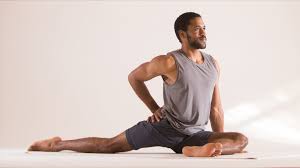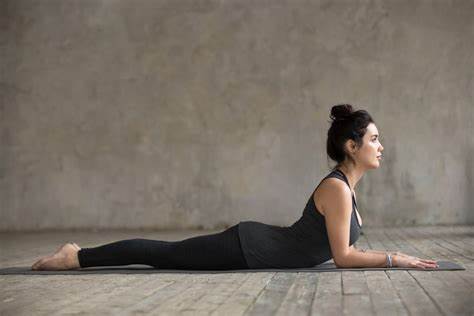Best Yoga Poses for Runners: Stretch, Strengthen, and Recover

As a runner, you demand a lot from your body. The repetitive motion of running builds incredible endurance but can also create muscle imbalances and tightness in key areas like the hips, hamstrings, and calves. Incorporating yoga into your training routine can be transformative—providing an invaluable complement to your running regimen by increasing flexibility, strengthening supporting muscles, and accelerating recovery.

Why Runners Need Yoga
Running primarily works your lower body in a forward-moving plane of motion. This repetitive movement pattern can lead to:
- Tight hip flexors, hamstrings, and calves
- Limited mobility in the hips and ankles
- Weakness in stabilizing muscles
- Reduced range of motion
- Increased risk of common running injuries
A strategic yoga practice addresses these issues by opening tight areas, strengthening neglected muscles, and promoting body awareness that can improve your running form.
Top Yoga Poses for Runners
1. Downward Facing Dog (Adho Mukha Svanasana)
This fundamental pose stretches multiple running muscles simultaneously while strengthening your upper body.
Benefits for runners:
- Stretches calves, hamstrings, and shoulders
- Strengthens arms and core
- Relieves tension in the spine
- Improves circulation
How to do it: Start on hands and knees, then lift your hips up and back, forming an inverted V-shape. Press your heels toward the ground (they don't need to touch) and relax your head between your arms. Hold for 5-10 deep breaths.
2. Low Lunge with Twist (Parivrtta Anjaneyasana)

Benefits for runners:
- Opens hip flexors and quadriceps
- Improves spinal mobility
- Stretches the often-neglected side body
- Improves balance
How to do it: From a lunge position with your right foot forward, place your left hand on the floor or on a block inside your right foot. Extend your right arm toward the ceiling, opening your chest to the right. Hold for 5 breaths, then repeat on the other side.
3. Pigeon Pose (Eka Pada Rajakapotasana)

Benefits for runners:
- Deeply releases the hip rotators and glutes
- Stretches the hip flexors of the extended leg
- Helps prevent and treat IT band syndrome
- Can relieve sciatic pain
How to do it: From hands and knees, bring your right knee behind your right wrist and angle your shin toward your left hip. Extend your left leg straight behind you. For a deeper stretch, walk your hands forward and lower your upper body toward the floor. Hold for 1-2 minutes, then switch sides.
4. Reclining Hand-to-Big-Toe Pose (Supta Padangusthasana)

Benefits for runners:
- Safely stretches hamstrings without stressing the lower back
- Increases hip mobility
- Strengthens lower back & hip flexors if performed well with a neutral spine.
How to do it: Lie on your back, extend your right leg toward the ceiling, and hold the back of your thigh, calf, or foot (use a strap if needed). Keep your left leg extended on the floor with the foot flexed. Hold for 8-10 breaths, then switch legs.
5. Bridge Pose (Setu Bandhasana)

Benefits for runners:
- Strengthens glutes and hamstrings
- Opens the chest and shoulders
- Counteracts the forward-leaning running posture
How to do it: Lie on your back with knees bent and feet hip-width apart. Press into your feet and lift your hips toward the ceiling. Interlace your fingers beneath your back or hold your ankles. Hold for 30-60 seconds.
6. Legs Up the Wall (Viparita Karani)
Benefits for runners:
- Promotes recovery by draining fluid from tired legs
- Relieves swollen feet and ankles
- Calms the nervous system
- Can help reduce cramping
How to do it: Sit with one hip against a wall, then swing your legs up as you lie back. Scoot your buttocks as close to the wall as comfortable, with legs extended up the wall. Relax your arms by your sides and close your eyes. Stay for 5-10 minutes.
7. Supine Figure-4 Pose (Supta Kapotasana)

Benefits for runners:
- Targets the piriformis and deep hip rotators
- Helps prevent and treat piriformis syndrome
- Relieves lower back tension
- Opens the hips without requiring much flexibility
How to do it: Lie on your back with knees bent. Cross your right ankle over your left thigh, creating a figure-4 shape. Thread your right arm between your legs and clasp your hands behind your left thigh. Gently pull your left thigh toward your chest. Hold for 1-2 minutes, then switch sides.
Incorporating Yoga Into Your Running Routine
For maximum benefit, try to include yoga in your training schedule in these ways:
- Pre-run: 5-10 minutes of gentle dynamic yoga to warm up muscles
- Post-run: 10-15 minutes of static stretching poses to release tension
- Recovery days: 30-45 minutes of full practice focusing on problem areas
- Before bed: 15 minutes of restorative poses to improve sleep quality

Listen to Your Body
Remember that yoga should complement your running, not compromise it. Start slowly and avoid pushing into pain. With consistent practice, you'll notice improved flexibility, stronger stabilizing muscles, better balance, and potentially fewer injuries.
As both a yoga practitioner and a runner, your body will thank you for the balance you're creating—making you stronger, more flexible, and more resilient both on and off the running trail.



